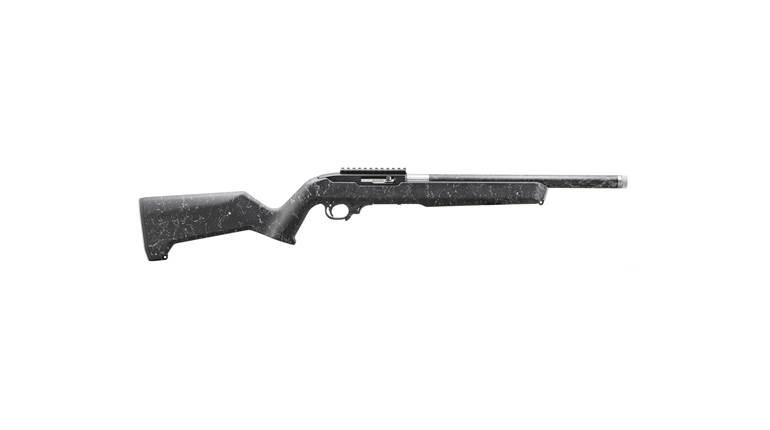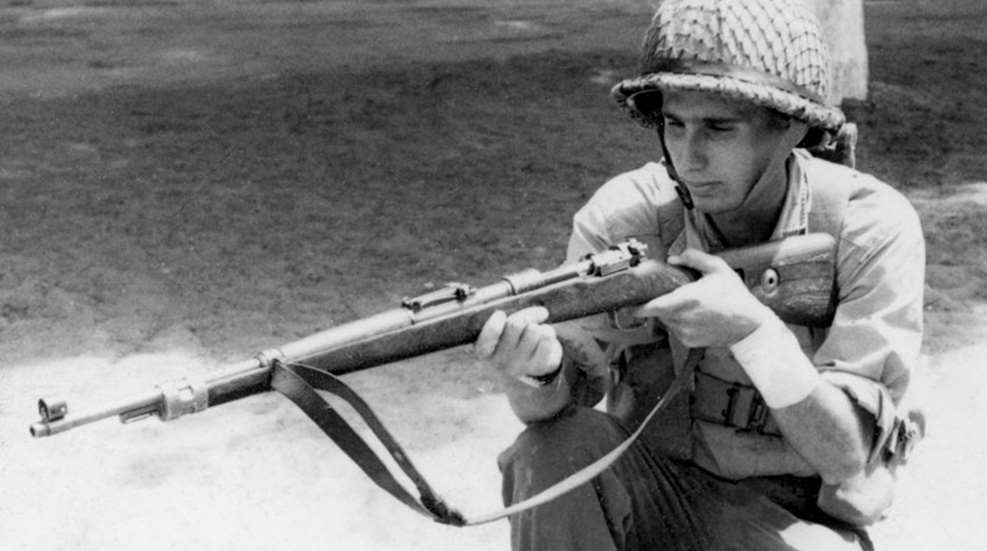
An Israeli soldier in the early 1950s is shown (above) holding a World War II-era surplus K98 rifle.
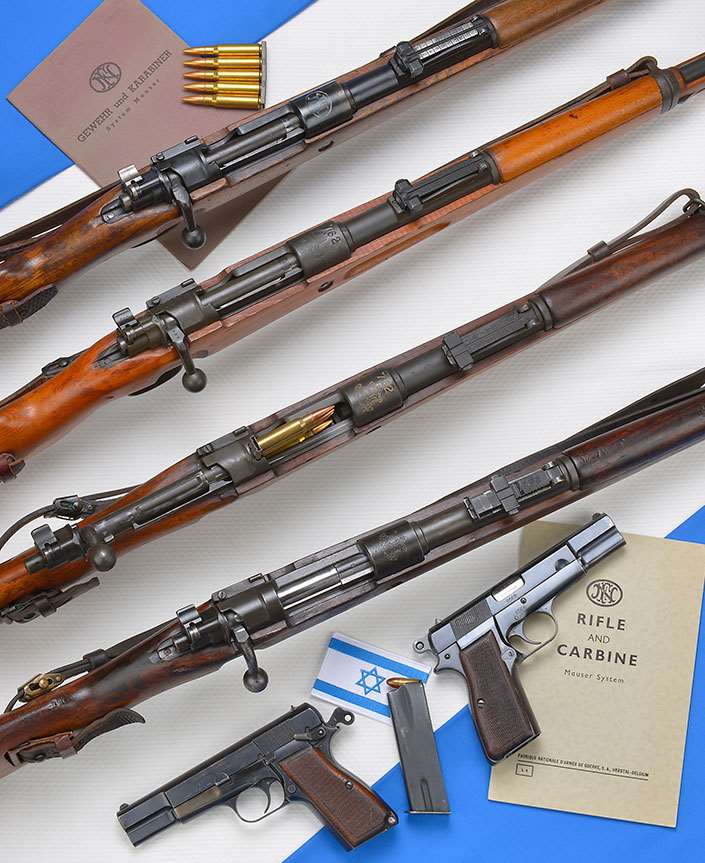
Since the creation of the United Nations, few measures have garnered as much attention as Resolution 181 (II). Radio and television sets worldwide tuned in on Nov. 29, 1947, for the vote to propose an independent Jewish state in Palestine. The controversial vote passed with the approval of 33 nations, while 13 countries voted against and 11 abstained or were absent.
Even before the United Nations resolution passed, the entire region of Palestine was engulfed in a civil war. This war morphed into the Israeli War of Independence (or Arab-Israeli War) after Israel declared independence on May 14, 1948. Jerusalem was immediately besieged on May 15. The situation quickly turned dire; the Jewish population of 600,000 was surrounded by hostile Arab countries with a population of more than 15 million. The new government relied on the members of older independence groups, most notably the Haganah, “The Defense,” which had fought to protect Jewish interests, and for independence, over a period of decades. Poorly outfitted Jewish fighters were facing well-equipped armies from Egypt, Iraq and Jordan. The Arabs vowed to annihilate the Jews. It was a fight for survival and a fight against a second Holocaust.
Three of the countries voting for the UN resolution, the United States, Czechoslovakia and Belgium, had a significant impact on the survival of the Jewish state of Israel.
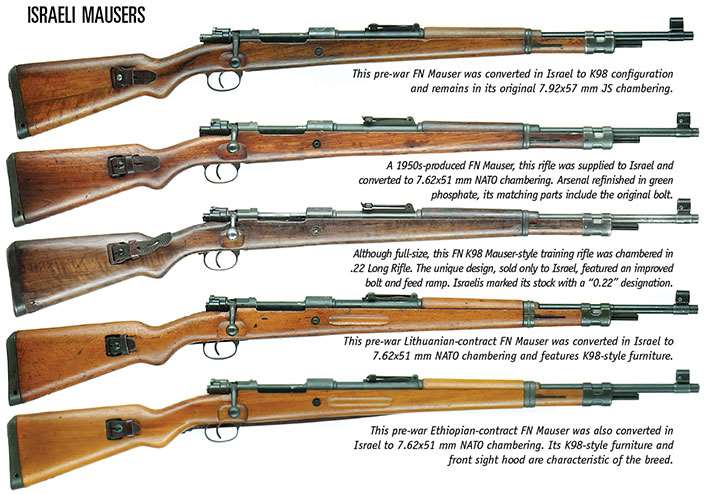
Czechoslovakia
The Czech legation at the UN voted for the Jewish state only a few months before a Communist coup turned Czechoslovakia into a Soviet satellite state. Czechoslovakia became the most important cog in the wheel to help arm the Jewish people. Surplus German and Czech World War II guns were acquired from the Czechoslovak government and shipped to Palestine. The Czechoslovak aid is well-known; not only did it provide small arms, the country became a centralized hub for all forms of material aid. While small arms were important, the Jews needed armor and an air force to counter the Arab armies. The Czechs helped establish the Israeli air force by initially selling surplus German Messerschmitt Bf 109 fighter planes, as well as Czech clones known as the Avia S-199. Sales were later expanded to include surplus Spitfires. All this aid amounted to huge financial revenues for the Czechs. During this time, Joseph Stalin allowed continued support after the Czech communist coup, not so much to support the Jews but for the consternation of the British Empire.
Belgium
The Belgians also voted in favor of the UN resolution after the socialist Belgian foreign minister Paul-Henri Spaak caused controversy by calling a Jewish state “dangerous.” Most Belgians did not share that viewpoint. Many were troubled by the fate of the Jewish people during the war, and by the 1946 British blockade against Jewish immigrants. The British internment camps in Cyprus and the detainment of Holocaust survivors were considered scandalous.
Publicly, some Belgian politicians appeased their allies, including Great Britain, who favored the Arabs while advocating for the international arms embargo. Privately, some Belgian officials turned a blind eye toward the embargo in favor of arming the Jewish people.
A notorious international arms dealer negotiated with the Belgian government for the purchase of all available surplus wartime German small arms. The extent of the government’s involvement in the arms deal is still cloaked in secrecy, but export permits were granted. It was not the first time the Belgian government had gone against the wishes of Great Britain. In the 1930s, Fabrique Nationale (FN) had sold arms to Abyssinia while Belgian military officers were advising and forming modern military fighting units to counter the growing threat from fascist Italy.
The arms dealer most likely sold the surplus guns at enormous profit. The desperate situation of the Jews in Palestine was well-known, and fundraising events were held worldwide. Financing the arms purchases was not the problem, purchasing arms and getting them to the region was far more difficult.

The United States
President Harry S. Truman was an essential supporter of the UN resolution and had flexed political muscle in order to garner international support. The support came, however, after Truman wrote Congress on April 15, 1947, to restore the Neutrality Act. Consequently, an international arms embargo went into effect on Dec. 5, 1947.
It was illegal for United States citizens to sell equipment to, or fight for, the state of Israel. The Israelis lacked pilots, so recruiting former U.S. airmen in secrecy was a high priority. Despite the restrictions and risks, several American veterans answered the call and made their way to Czechoslovakia in order to fly combat missions for Israel. Clandestine groups in the U.S. were focusing on acquiring surplus World War II planes. A fake Panamanian airline company was established in order to mislead the U.S. government about the true purpose of these acquisitions. Some Curtiss C-46s and a few military Lockheed Constellations were purchased and flown to Panama before making their way to Israel (via Brazil, Morocco, Italy and Czechoslovakia). American veterans flew and fought for Israel at great peril, the U.S. State Dept. had warned that these men would lose their citizenship if caught breaking the Neutrality Act. That was of little concern to those in combat—with some paying the ultimate price. Others remained in Israel after the war to help build the country, especially the Israeli Air Force and El Al airline.
Israel’s Arms
The Israeli War of Independence was, ironically, fought with large quantities of arms manufactured by Nazi Germany. Small arms included thousands of K98 Mauser rifles, Luger pistols, P38 pistols, pre-war and wartime FN-Browning pistols, Radom VIS pistols, MG 34 machine guns, and surplus Czech arms, including CZ pistols and machine guns among others. Large quantities of British arms were also used, specifically (captured) Enfield rifles, Bren light machine guns, Sten submachine guns and Webley revolvers. The simplicity of the Sten made it a perfect candidate for domestic manufacture, copies were already being manufactured in Palestine before the War of Independence. Surplus U.S. arms, such as the Thompson submachine gun, M1 carbine and Garand, were also used extensively. All arms were vital, no matter how challenging the logistics. Despite origin and connotation, German wartime markings were rarely defaced by arsenals. American pilots were issued wartime German flight suits and asked to fight in German planes. Signs of Nazi Germany were present on much of the equipment.
Jewish forces quickly focused on the K98 as their main battle rifle, which may have been predicated by the large quantities of surplus rifles obtained from Czechoslovakia and Belgium, or the large quantities of available 7.92x57 mm ammunition. Unlike British arms, the Israelis could acquire new K98 rifles and ammunition from the Czechoslovak government, which continued to produce the model after the war.
The communist coup in February 1948 in Czechoslovakia may have been a contributing factor as to why Fabrique Nationale was contracted to manufacture a version of the K98 for Israel. By that time, Joseph Stalin was in control of the nations behind the Iron Curtain, and his support of Israel was unreliable and contradictory at best.
While the details of the Belgian purchases remain cloaked in mystery, the state of Israel began buying rifles from FN after it declared independence. Although FN had manufactured a few K98 parts during the German occupation, it had never before built complete K98 rifles. The rifles were marked with the emblem of the Israeli Defense Forces (IDF), which was actually the old logo of the Haganah—a sword and olive branch. All rifles were finished in FN’s standard rust blue and were chambered in 7.92x57 mm. No rifles were chambered in 7.62x51 mm NATO as is often reported. Early contract rifles conveniently lack production year code markings. This first order marked the beginning of more than 40 years of cooperation between FN and the state of Israel.
The state of Israel purchased thousands of FN K98-style rifles, including 1,800 .22 Long Rifle training rifles, up to about 1956. Additionally, Energa Rifle grenades and launchers, FN Browning High Power pistols and FN BAR machine guns were also acquired. Israel lacked armored vehicles, and the Energa grenade was essential to counter the armored vehicles of the hostile Arab armies.
The .22 Long Rifle-chambered training rifles deviated from FN’s standard trainers. The Israelis not only demanded that it resemble the K98, they requested a modified feeding ramp and improved bolt. Israeli arsenals overhauled the training rifles in 1958 and modified many German trainers it had acquired at the time of independence. Many of those rifles were modified to the standard K98-style configuration. The FN trainers were mostly inspected, repaired if needed and “0.22” markings were added to the stock in order to distinguish them from the 7.62 mm rifles. The “0.22” marking is nonsensical as it is not the metric equivalent (5.6 mm) of the .22 caliber. The FN training rifles were usually not refinished, and most are encountered today in original blue finish.

The country of Israel was small with limited resources, so nothing was wasted. Throughout the years, Israel had acquired a variety of pre-war rifles from various sources, these rifles were all displaced during World War II and were once Czech, Lithuanian or Ethiopian issue, among others. Those pre-war rifles were stripped and the barreled actions were used to convert them into K98-style rifles. The original contract markings were not removed from the receivers. The wide variety of configurations makes them fascinating collector items, and though most were later converted to 7.62 mm, some survive in their original 7.92 mm chambering with Israeli K98-style furniture.
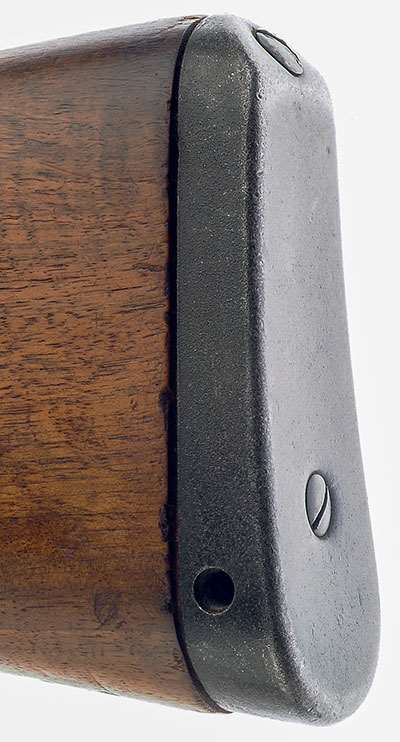
In 1955, Israel officially adopted the FN FAL and FALO, followed by the FN MAG-58 machine gun. It should be noted that the FAL was gradually transitioned into service, it was not an immediate replacement for the Mauser rifles. By the time the IDF adopted the FAL, it had commenced programs to standardize the 7.62x51 mm NATO cartridge. By 1957, Israeli arsenals were busy converting thousands of Mauser rifles to 7.62x51 mm NATO, the FN BAR was also converted to 7.62x51 mm NATO. Fabrique Nationale’s innovative conversion system worked with standard FAL magazines, and the 7.62 mm version became known as the FN BAR DA1. Fabrique Nationale supplied thousands of unfinished Mauser barrels. They were not proofed in Liège as they were not in a finished state: fitting, finishing and assembly were all done in Israel.
Rifles were modernized with new 7.62x51 mm NATO barrels, stocks and receivers were “7.62” marked for quick identification. All parts were refinished with a green phosphate treatment. Little attention was spent on matching part numbers, which makes “all-matching” rifles exceedingly rare today. The refurbishment program included almost all Mauser rifles including wartime K98 rifles, post-war Czech K98 rifles as well as pre-war FN and VZ rifles.
The 7.62 mm Mauser rifles were fielded and remained in service for decades. Even during the Six-Day War (1967), Mauser rifles and other surplus rifles were still used in combat with FAL rifles and Uzi submachine guns. Throughout its existence, the state of Israel has remained at a high level of alert. Ordinary citizens from office workers to school teachers were armed. The FN Mauser rifles continued to have an important role as a secondary arm. Only after decades of service were the surviving rifles sold worldwide as collector’s items.
Seventy years ago, after the atrocities of the Holocaust, men and women from all over the world took the initiative to go to Palestine and fight for an independent Jewish state. Their bravery and determination lives on in the tools they used: those Mausers we now cherish as collectibles.
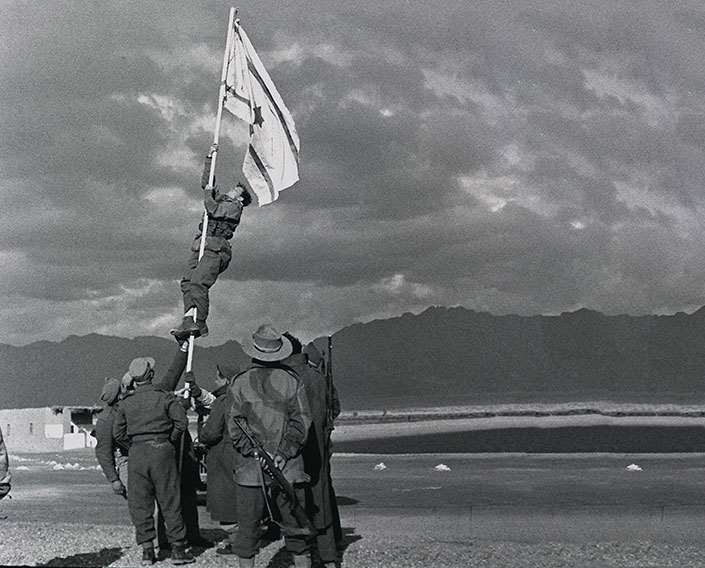
References:
“Above and Beyond,” 2014 documentary film by Roberta Grossman
The Uzi Submachine Gun by David Gaboury
FN Mauser Rifles: Arming Belgium and the World by Anthony Vanderlinden
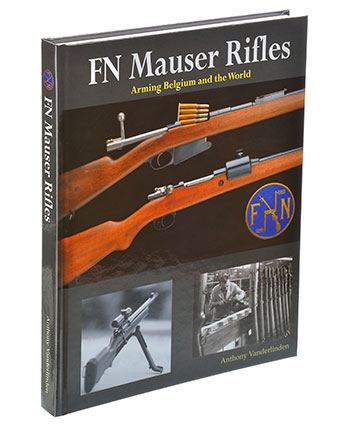 FN Mauser Rifles: Arming Belgium and the World
FN Mauser Rifles: Arming Belgium and the World
Devoted to the history, models, variations, contracts and accessories of Mauser rifles and carbines built by Fabrique Nationale and Belgian arsenals, FN Mauser Rifles: Arming Belgium and the World, by Anthony Vanderlinden, is the result of more than seven years of research. It was made possible by the cooperation of Fabrique Nationale, the Ars Mechanica Foundation, museums and private collectors.
This 8¾"x11½" hardbound book has 428 pp. and covers the classic line of FN military Mauser rifles and carbines, including contracts for the Model 1889, the Spanish Mauser (1893), Model 1922, Model 1924, Model 1930 and variants as well as Belgian arsenal models, training rifles and even bayonets. Sporting rifles, including the Deluxe and Supreme, are included with particular attention paid to those imported into the United States. The book has more than 1,250 images, including period photographs never previously published.
FN Mauser Rifles is available from Wet Dog Publications (Dept. AR), 5603-B W. Friendly Ave., Suite 166, Greensboro, NC 27410; (336) 394-4138; fnbrowning.com. The price is $68.95 plus shipping, and NRA members receive an autographed copy and $10 discount by mentioning this review or entering the code “NRA” online.













